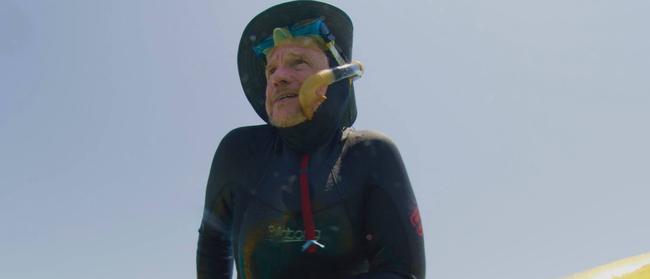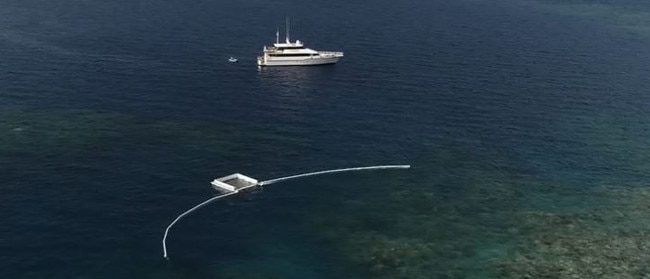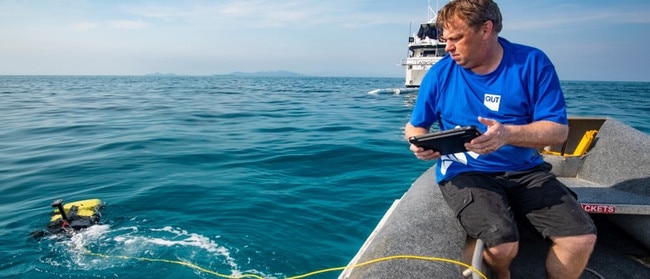Great Barrier Reef rescue: Southern Cross University Prof Peter Harrison and QUT Prof Matthew Dunbabin in world-first regeneration project
A LEADING coral scientist is helping to ‘reseed’ the Great Barrier Reef in a world-first project to regenerate the global treasure.
Beaches & Fishing
Don't miss out on the headlines from Beaches & Fishing. Followed categories will be added to My News.
LEADING coral scientists have spent the past month “reseeding” the Great Barrier Reef in a world-first project to regenerate the global treasure in the wake of consecutive years of coral bleaching.
Coinciding with this year’s mass coral spawning event on the reef, the team of specialists used pioneering methods to harvest coral larvae, rearing it in netted enclosures over the reef.

A specially designed “underwater crop duster” called the LarvalBot was then used to disperse the juvenile coral over areas hit by the savage bleaching events which killed about half the reef last year according to experts.
Southern Cross University Gold Coast Professor Peter Harrison and QUT Professor Matthew Dunbabin combined their respective expertise in rearing coral and robotics to trial the program at Vlasoff Reef near Cairns.
Over the past few years Prof Harrison developed the technique of breeding and nurturing 1mm-long larvae to breeding corals roughly the size of dinner plates on reefs damaged by dynamite fishing in the Philippines.
Lismore-based Prof Harrison — who discovered mass coral spawning on the Great Barrier Reef in the 1980s — said the corals spread over the reef this summer could give the regeneration project a chance of success because they would be more hardy.

“These corals have survived the last two bleaching events, we know they are heat tolerant,” Prof Harrison said.
“And therefore, they’re the ones that we really need to be capturing the spawn from because they will give us larvae that gives us a fighting chance to overcome the problems of increasing sea temperatures and mass bleaching events.”
He said the technique had “enormous potential” to operate across large sections of the UNESCO World Heritage Site.
“We’ll be closely monitoring the progress of settled baby corals over coming months and working to refine both the technology and the technique to scale up further in 2019.”

Professor Dunbabin engineered QUT’s RangerBot, designed to help control the coral-killing crown of thorns starfish, into the LarvalBot which gently releases the larvae onto damaged reef areas allowing it to settle and over time develop into coral polyps or baby corals.
SUBSCRIBE TO THE GOLD COAST BULLETIN FOR JUST $5 A MONTH FOR THE FIRST THREE MONTHS
With a current capacity to carry about 100,000 coral larvae per mission, there are plans to scale up to millions of larvae.
Great Barrier Reef Foundation Managing Director Anna Marsden said of the project: “It’s exciting to see this project progress from concept to implementation in a matter of weeks, not years.”
“The recent IPCC report highlights that we have a very short window in which to act for the long term future of the Reef, underscoring the importance of seeking every opportunity to give our reefs a fighting chance.”
